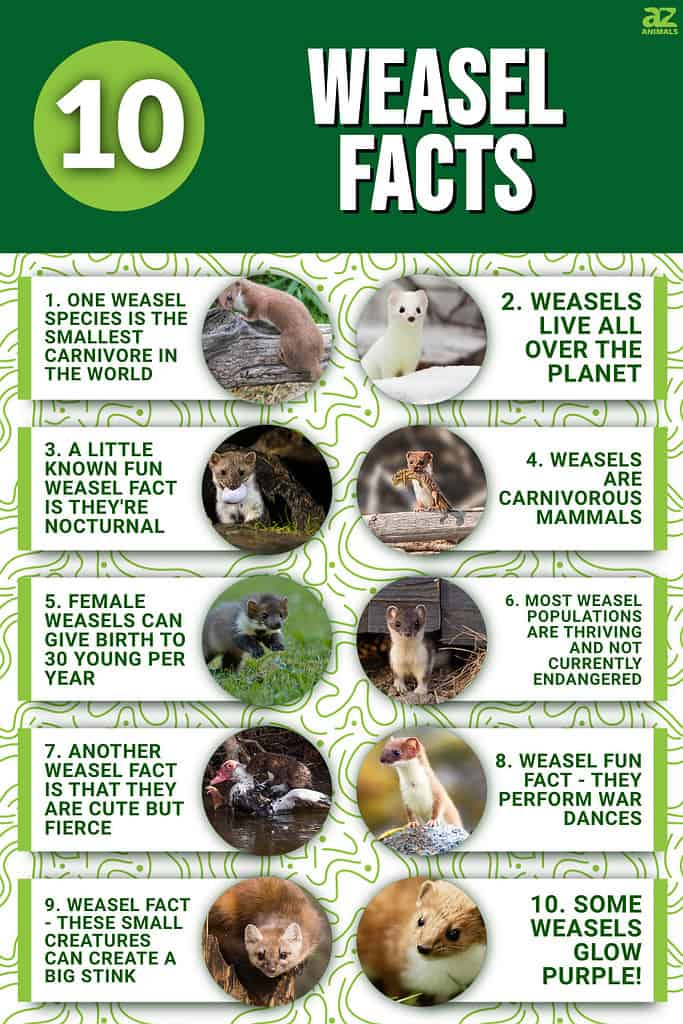
Weasels are tiny mammals with elongated bodies and necks, tiny little legs, and small heads. Other prominent weasel facts include these animals being mischievous and extremely intelligent. But, few people know about many other weasel facts, so let’s learn more about weasels.
1. One Weasel Species Is The Smallest Carnivore In The World
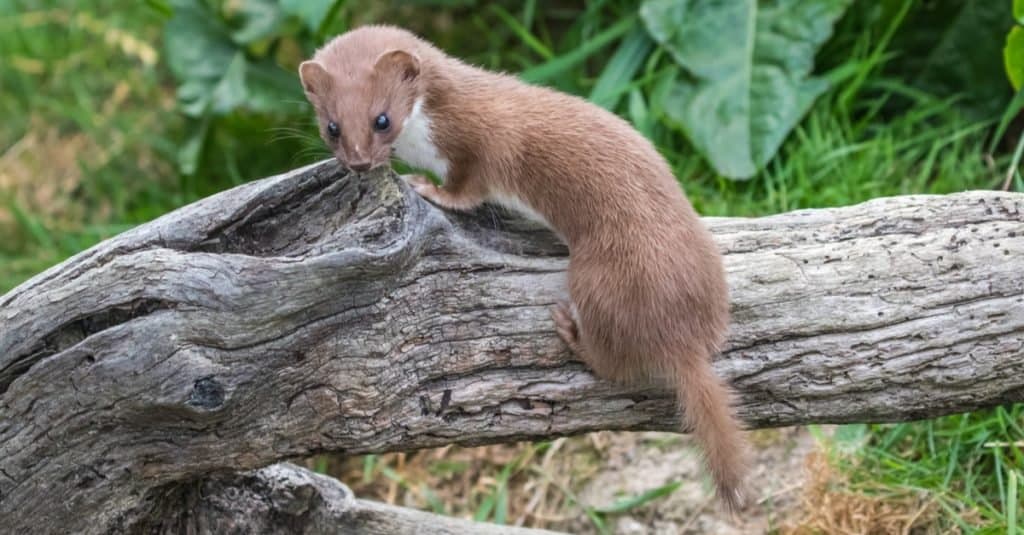
Weasels grow to 10 inches long at most and weigh roughly one ounce.
©Stephan Morris/Shutterstock.com
Different weasels come in various sizes, depending on their species, but the smallest is the least weasel. According to animal experts, the least weasel is the smallest carnivore in the world. These weasels grow to 10 inches long at most and weigh roughly one ounce. Larger species of weasel, like the long-tailed weasel and the tropical weasel, grow to 12 inches and weigh up to 12 ounces. The tails of these weasels can reach up to eight inches. Most weasels are brown, grey, or black and have white or yellow markings. Interestingly, all weasels change to a white color in winter, a little-known fun fact about weasels.
2. Weasels Live All Over The Planet
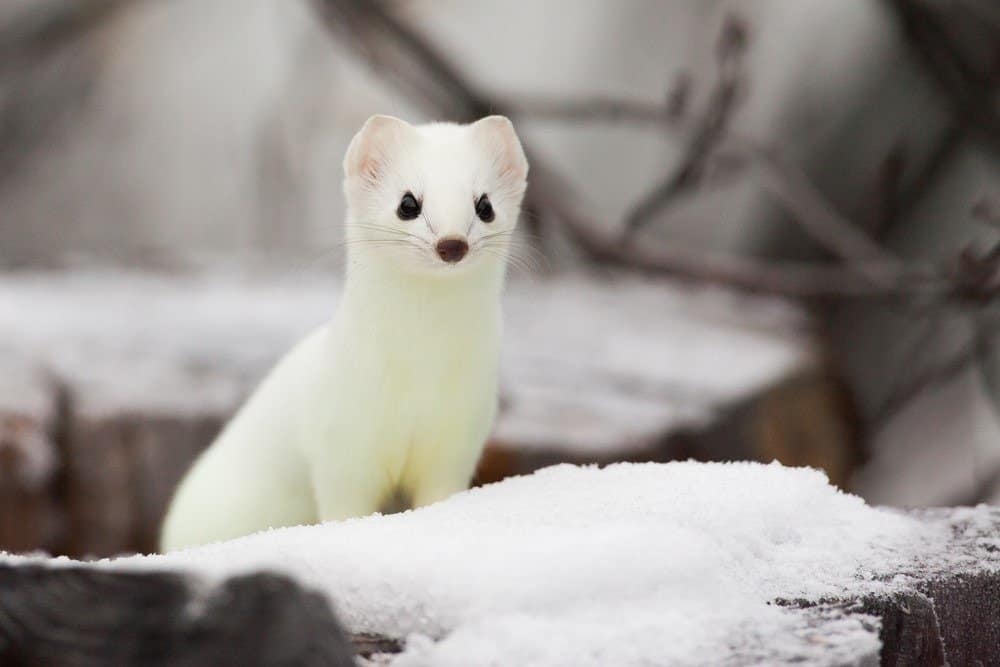
Weasels can be found all over the world in a variety of habitats.
©Jukka Jantunen/Shutterstock.com
The most common species of the weasel is the short-tailed weasel, which lives in North America, Europe, Asia, and even the Arctic. The long-tailed weasel lives in North America, and the tropical weasel lives in South America. The Japanese and mountain weasel inhabit Asia, while the African striped weasel only lives in Africa. Weasels often live in marshes, scrubs, hedgerows, alpine meadows, riparian woodlands, and riverbank habitats. Another weasel fact is that they live in burrows and often build their own shelters, but some weasels steal the burrows of other animals to make them their own. Some weasels even invade termite hills and live in them.
3. A Little Known Fun Weasel Fact Is They’re Nocturnal
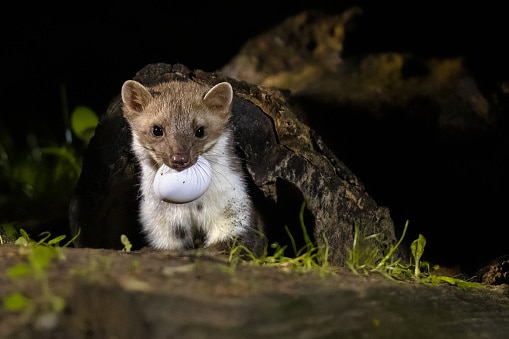
Weasels are nocturnal and spend most of their nights hunting, eating and storing food.
©CreativeNature_nl/iStock via Getty Images
One weasel fact is that these small mammals are nocturnal, meaning they sleep during the day and become active at night. Most of their awake time is occupied with hunting, storing food, and eating. This behavioral fact is because weasels cannot store fat and need a consistent food supply to stay alive. Weasels eat between 40 and 60 percent of their body weight daily, which is not much because most species don’t weigh more than 12 ounces.
4. Weasels Are Carnivorous Mammals
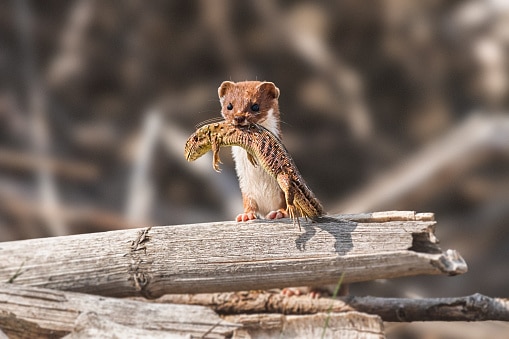
Weasels are surprisingly successful hunters who prey on animals like frogs, birds, and lizards.
©castigatio/iStock via Getty Images
They love hunting and eating rats, mice, voles, and rabbits. Weasels are opportunistic predators and prey on other animals like frogs, birds, and their eggs. These successful hunters can squeeze their thin bodies into small crevices to reach a hard-to-get target, making this another fun fact about weasels.
5. Female Weasels Can Give Birth To 30 Young Per Year
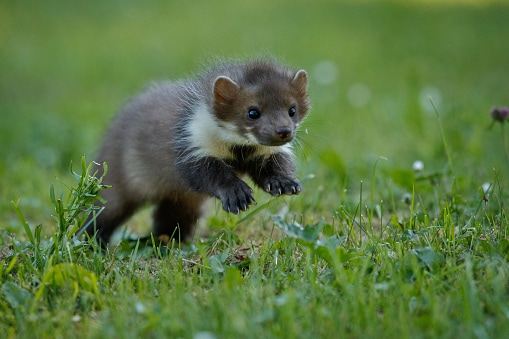
Gestation periods for some weasels are over nine months resulting in litters of up to 15 kits.
©Photocech/iStock via Getty Images
Weasels have one to two litters yearly, up to 15 young per litter. Young weasels are called kits. Female weasels are usually pregnant for a month, depending on the species. Different species have a different number of kits per litter, gestation periods, weaning ages, and sexual maturity ages. Some species have an extremely long gestation, like long-tailed weasels. Weasels mate during summer, but implantation does not occur immediately. The egg will only start to develop in March, which means the gestation period is longer than nine months, which is another unique weasel fact.
6. Most Weasel Populations Are Thriving and Not Currently Endangered

Most weasel species are doing just fine.
©Anna Richard/iStock via Getty Images
According to the IUCN’s Red List of Threatened Species, most species of weasel are listed as the least concern, but some species are not this lucky. Species like the mountain weasel and Japanese weasel are listed as near threatened. Other species, like the Colombian weasel, are listed as vulnerable due to deforestation in their natural habitats. Weasels in New Zealand are currently listed as the least concern, but this is likely to change. New Zealand plans to eradicate all weasels by 2050 as they are an invasive species and have become a threat to native wildlife.
7. Another Weasel Fact Is That They Are Cute But Fierce
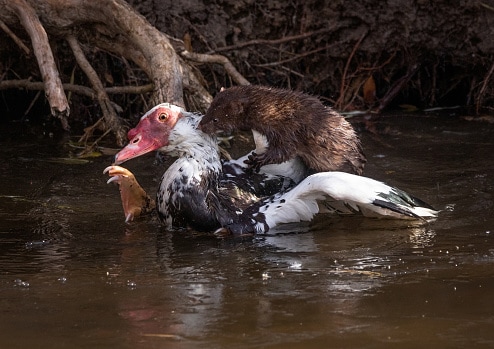
Weasels can bring down animals much larger than themselves.
©graphicphoto/iStock via Getty Images
These mammals are fierce hunters, and because they need to eat 40 to 60 percent of their body weight daily, they must make daily kills. Weasels mostly hunt mice and voles by burrowing them into their shelters. Weasels will grab their prey, wrap their bodies around them, and kill it with a bite to the head. The target dies from this puncture to its skull or spinal cord.
8. Weasel Fun Fact – They Perform War Dances

Weasels are ferocious predators that need to eat between 40% and 60% of their body weight daily.
When hunting, weasels perform a ‘war dance’ by twisting, hopping, and darting around to corner their prey. Weasels do this to confuse and distract their target. The quarry, specifically rabbits, can sometimes die from fright because of this intimidating weasel fact. Other carnivorous mammals, like stoats and ferrets, also perform this war dance. But weasels also perform this dance for no reason. Some weasels perform the war dance when there is no prey close to them, maybe because it’s fun.
9. Weasel Fact – These Small Creatures Can Create A Big Stink

Like their skunk cousins, weasels spray stinky fluid when they are threatened.
©mtnmichelle/iStock via Getty Images
When weasels become frightened, they spray up to two tablespoons of thick, oily, and yellowish fluid in the direction of the danger or predator. Similar to their cousin, a skunk, weasels have a pouch under their tail that contains this fluid. And you don’t want to be close by when this happens, because the smell is not pleasant at all!
10. Some Weasels Glow Purple!
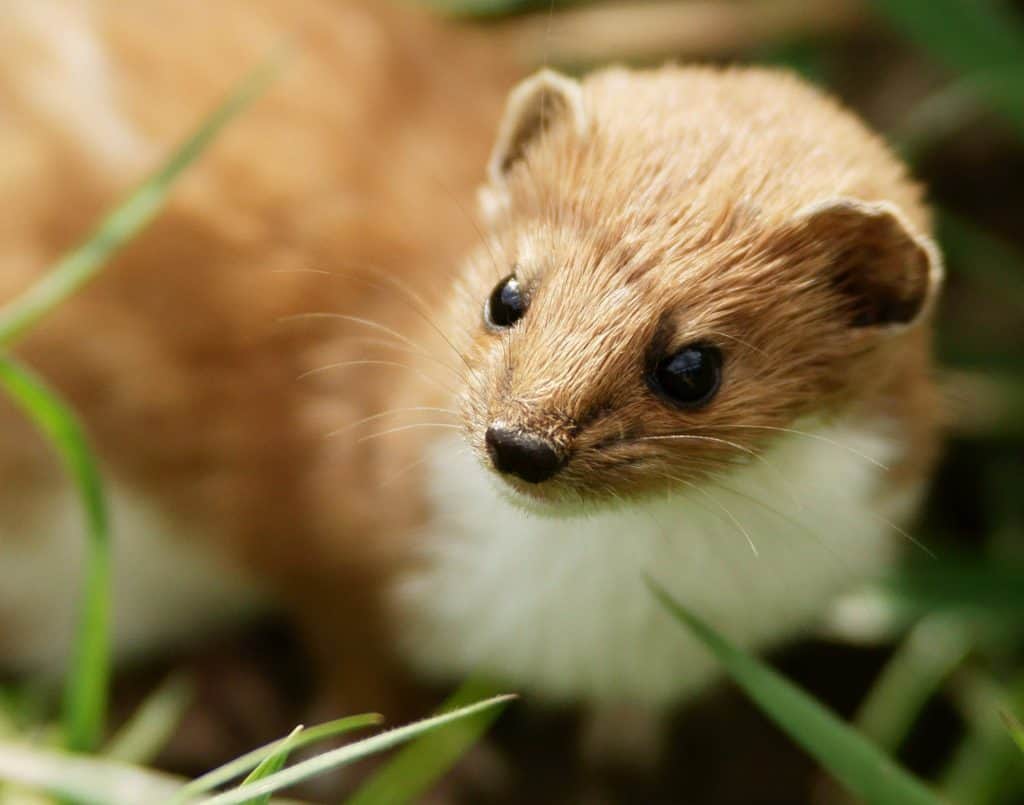
Some weasels perform the war dance when there is no prey close to them.
Roger M. Latham discovered this fun fact about weasels in the 1950s. In Pennsylvania, weasels were a menace, leading to the Pennsylvania Game Commission offering a bounty for every weasel pelt. Three different species lived in Pennsylvania, making it hard to distinguish which pelts belonged to a specific species. Latham found out that the coats of the least weasel would have a vivid lavender glow when placed under ultraviolet light. In contrast, the pelts of the other species would not glow. Many sources attest to this, but this fun fact about weasels has never been validated. But, weasels are fascinating little creatures, and we would not be surprised if the least weasel’s coat does glow purple under ultraviolet light.
The photo featured at the top of this post is © Peter Trimming / CC BY 2.0, Flickr / Original
Thank you for reading! Have some feedback for us? Contact the AZ Animals editorial team.






